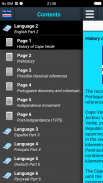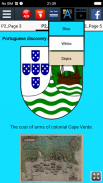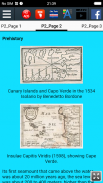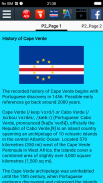








History of Cape Verde

History of Cape Verde介绍
The recorded history of Cape Verde begins with Portuguese discovery in 1456. Possible early references go back around 2000 years.
Cape Verde (/ˌkeɪp ˈvɜːrd/) or Cabo Verde (/ˌkɑːboʊ ˈvɜːrdeɪ/, /ˌkæb-/) (Portuguese: Cabo Verde, pronounced [ˈkaβu ˈveɾðɨ]), officially the Republic of Cabo Verde,[9] is an island country spanning an archipelago of 10 volcanic islands in the central Atlantic Ocean. Located 570 kilometres (350 mi) west of the Cape Verde Peninsula in West Africa, the islands cover a combined area of slightly over 4,000 square kilometres (1,500 sq mi).
The Cape Verde archipelago was uninhabited until the 15th century, when Portuguese explorers discovered and colonized the islands, establishing the first European settlement in the tropics. Ideally located for the Atlantic slave trade, the islands grew prosperous throughout the 16th and 17th centuries, attracting merchants, privateers, and pirates. The end of slavery in the 19th century led to economic decline and emigration. Cape Verde gradually recovered as an important commercial center and stopover for shipping routes. Incorporated as an overseas department of Portugal in 1951, the islands continued to agitate for independence, which was peacefully achieved in 1975.
Since the early 1990s, Cape Verde has been a stable representative democracy, and remains one of the most developed and democratic countries in Africa. Lacking natural resources, its developing economy is mostly service-oriented, with a growing focus on tourism and foreign investment. Its population of around 512,000 is mostly of mixed African, Moorish, Arab and European heritage, and predominantly Roman Catholic, reflecting the legacy of Portuguese rule. A sizeable diaspora community exists across the world, slightly outnumbering inhabitants on the islands.
Historically, the name "Cape Verde" has been used in English for the archipelago and, since independence in 1975, for the country. In 2013, the Cape Verdean government determined that the Portuguese designation Cabo Verde would henceforth be used for official purposes, such as at the United Nations, even in English contexts. Cape Verde is a member of the African Union.
佛得角的历史记载与葡萄牙的发现始于1456年趁早引用去大约2000年前。
佛得角(/ˌkeɪpvɜːrd/)或佛得角(/ˌkɑːboʊvɜːrdeɪ/,/ˌkæb-/)(葡萄牙语:佛得角,发音[kaβuveɾðɨ]),佛得角的正式共和国,[9]是一个岛国跨越在大西洋中部10个的火山岛屿组成的群岛。位于570公里(350英里)的佛得角半岛在西非的西岛盖略超过4000平方公里组合面积(1500平方英里)。
佛得角群岛无人居住,直到15世纪,当葡萄牙探险家发现和殖民统治的岛屿,建立在热带地区的第一批欧洲移民。地理位置优越,大西洋奴隶贸易,这些岛屿在整个16世纪和17世纪成长繁荣,吸引了客商,私和海盗。在19世纪的奴隶制结束导致经济衰退和移民。佛得角作为一个重要的商业中心和中途停留地的航线逐渐恢复。合并为葡萄牙在1951年的海外省,岛屿继续鼓动独立性,这是和平在1975年实现。
20世纪90年代以来的早期,佛得角一直是稳定的代议制民主,并且一直是最发达和民主的非洲国家之一。缺乏自然资源,它的经济发展主要是服务为本,越来越注重旅游业和外国投资。它的周围512,000人口主要是混合非洲,摩尔,阿拉伯和欧洲遗产,主要是罗马天主教的,反映了葡萄牙统治的遗产。 ,有相当大社区散居世界各地的存在,数量上超过略有岛屿上的居民。
历史上,名为“佛得角”已在英国使用的群岛,并自1975年独立,面向全国。在2013年,佛得角政府决定,葡萄牙指定佛得角今后将用于公务的,比如在联合国,即使是在英语环境。佛得角是非洲联盟的成员。
























